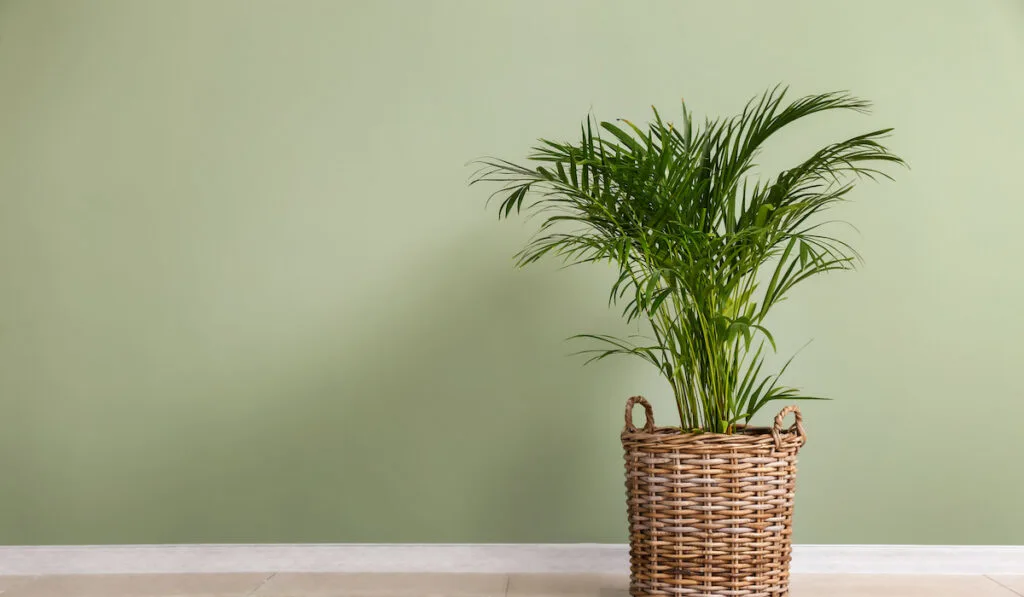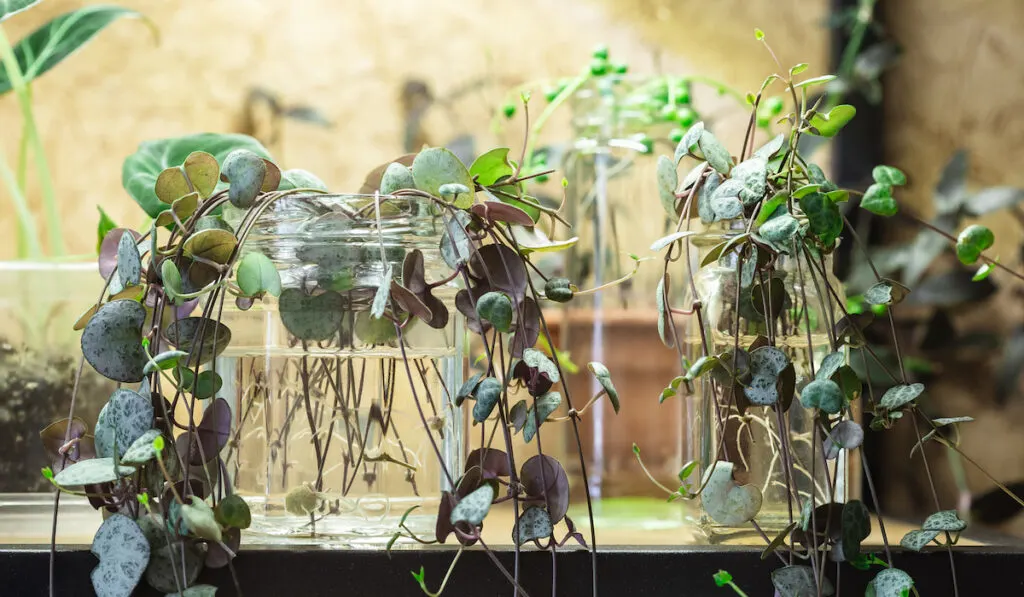Arranging various indoor plants throughout your home is a terrific way to decorate it with color, texture, and freshness.
However, you should be aware that many houseplants can be exceedingly harmful to cats and other pets in your home.
Many common plants can be fatal to cats and dogs. For example, the beautiful and delicate lily is one of the most dangerous plants for cats because every part of it is harmful.

But don’t worry. There are a lot of gorgeous plants that are safe for your furry friends.
As a matter of fact, houseplants can raise indoor humidity, leading to benefits such as less pet dander and higher air quality.
Read on to learn more about the various cat-friendly plants that may be placed in your home!
Table of Contents
Brief Descriptions of 10 Cat-Friendly Plants
| Name | Basic Information |
| Cast Iron Plant | Size: 3–5 feet in height; 1–2 feet in width Sun exposure: indirect sunlight, shade Care level: low maintenance Features: very hardy, attractive leaves |
| Schlumbergera | Size: 6–12 inches in height; 12–24 inches in width Sun exposure: indirect sunlight Care level: medium maintenance Features: beautiful flowers in the wintertime |
| Calathea orbifolia | Size: 2-3 feet in height Sun Exposure: indirect sunlight Care level: medium maintenance Features: air-purifying ability |
| Watermelon Peperomia | Size: 12 inches in height Sun exposure: moderate indirect sunlight Care level: medium maintenance Features: watermelon-patterned foliage |
| Areca Palm | Size: 8 feet in height Sun exposure: full to partial sun Care level: medium maintenance Features: tall plants with plume-like lush leaves |
| Zebra Cactus | Size: 12 inches in height Sun exposure: indirect sunlight Care level: low maintenance Features: interesting, unique foliage |
| Moth Orchid | Size: 3 feet in height Sun exposure: moderate indirect sunlight Care level: medium maintenance Features: appealing, long-blooming flowers |
| String Of Hearts | Size:12 feet long Sun exposure: moderate indirect sunlight Care level: low maintenance Features: trailing stems and showy foliage |
| Echeveria | Size: 2–24 inches in height; 2–12 inches in width Sun exposure: full sun Care level: low maintenance Features: showy foliage |
| African Violet | Size: 6–18 inches in height Sun exposure: bright to moderate indirect sunlight Care level: mid to low maintenance Features: beautiful, colorful blooms |
1. Cast Iron Plant

The cast iron plant, as the name implies, is a tough but elegant houseplant.
It is also possible to grow this plant as a perennial in climates within Zones 8–10.
Due to the species’ ability to thrive in conditions that would kill most other plants, the cast iron plant has become a favorite of those who don’t have much time to devote to plant maintenance.
The tiny purple blossoms on this plant are hard to spot amongst the foliage and can only be found near the soil’s surface.
While it may be lacking in showy blossoms, this plant more than makes up for it with its robust vigor and vibrant green foliage.
2. Schlumbergera (Christmas Cactus)

The Schlumbergera plant remains dormant for most of the year until just before Christmas when it bursts into gorgeous flowers in pink, red, or white colors.
The Christmas cactus gets its name from the fact that it blooms most reliably around December.
The first flowers bloom at the end of November, and they last until February.
Although Schlumbergera is a member of the cactus family, it does not have any thorns. Instead, it may develop little hairs or bristles.
Place your Schlumbergera in partial shade or indirect light. It enjoys being outside in the summer but not in direct sunlight, which might damage its delicate leaves.
3. Calathea orbifolia

The large, rounded, and visually appealing leaves of this plant are its main selling point.
The surface of this charming foliage is decorated with light green-silver streaks that lend beauty to the overall appearance of the leaf.
But Calathea orbifolia is not only beautiful to look at; the huge leaves on these plants actually help clean the air in the area, so it is well worth it to bring some of these plants into your home.
Calathea prefers bright, indirect lighting. However, direct sunlight should be avoided. Overexposure to sunlight can cause their leaves to fade and brown at the edges.
4. Watermelon Peperomia

The thick leaves of Watermelon Peperomia, which look like two-dimensional watermelons, are the plant’s main decoration.
The distinctive hue of the plant leaves is due to the contrast between green and silver along the veins.
While full sun and warmth are ideal, you may also successfully cultivate peperomia in partial shade.
It thrives in humid conditions with moderate watering, but the roots must be kept out of standing water.
5. Areca Palm

The Areca palm is one of the most well-liked houseplants due to its beautiful leaves, rapid growth, and sophisticated appearance.
The rich, plume-like leaves that top the tall stems of these plants are a stunning addition to today’s interior design. Its towering stature and narrow form allow it to use surprisingly little room.
Care for an Areca palm is not tricky, but the plant does require some attention. Therefore, it may present some challenges for novice cultivators.
Areca will feel most comfortable in a well-lit area with lots of soft light. It may begin to die if kept in the shade or partial shade, and it may suffer leaf burn if exposed to intense sunlight.
6. Zebra Cactus

The Zebra cactus is often the first plant to grow on a windowsill since it is so simple to care for.
The plant gets its name from the contrasting white growths on its deep green conical leaves. It grows in tight rosettes that are completely covered in dazzling white rings.
Zebra cactus needs to be in a bright spot but out of direct sunlight to prevent the leaves from turning red.
The soil should be allowed to dry out fully between waterings, which should occur every two to three weeks.
7. Moth Orchid

When it comes to flowering houseplants, the moth orchid stands out for its stunning beauty and prodigious blossoming ability.
Having a few orchids in an arrangement on the windowsill is a pleasure worth seeing.
These extraordinary flowers come in a wide range of colors and sizes, depending on the species.
Orchid cultivation is straightforward. These orchids thrive with primarily indirect light and a single, thorough watering once a week.
8. String of Hearts

Ceropegia wooda, or “string of hearts,” is a unique houseplant with trailing stems and showy foliage.
The slender, sparsely-leafed branches of the string of hearts plant resemble strands of beads strung together.
The heart-shaped leaves of the plant create an exceptionally beautiful ornament on these one-of-a-kind flower necklaces.
This plant variety requires little attention and is easy to grow. It is a tough plant that can survive harsh conditions, such as prolonged drought, thanks to its thick, waxy leaves that store water and other nutrients.
9. Echeveria

Echeverias are succulent houseplants that live for many years if properly cared for.
Its thick leaves make beautiful rosettes atop its short branches. The rosette of Echeveria swiftly grows to cover a large area since new plants sprout up all the time next to the mother plant.
Many kinds of Echeveria, which range in size, color, and leaf shape, can be grown together in a larger container. Light green, silver, purple, and even pink leaves are all possible.
Succulents like Echeveria have thick leaves that hold water.
Therefore, it does not need constant spraying or watering. They require little upkeep if any at all.
10. African Violet

Despite their African origin, these little violets have adapted well to life in pots on our windowsills.
They don’t cost much, are visually pleasing, last a long time, take up little room, and require little in the way of upkeep.
When paired with other violet plants, African violets look their best. A single plant is unremarkable, but a collection makes quite a statement.
It’s easy to build a collection of small violets because they’re inexpensive and available in a wide range of sizes and hues.
True fans have hundreds of species (out of more than 8,000) in their collections.
Final Thoughts
Cats are naturally curious and have little trouble reaching all the places around your home, so it’s crucial to know which plants they can safely interact with.
Here is a list of house plants, from big palm trees to tiny succulents, blooming orchids, and everything in between, to help you find the right plant to bring color and life into your home while keeping your cat safe.
Resources
- https://www.gardenersworld.com/how-to/grow-plants/plants-cat-friendly-houseplants/
- https://www.homesandgardens.com/gardens/cat-safe-indoor-plants
- https://www.gardeningknowhow.com/houseplants/cast-iron-plant/cast-iron-plants-information.htm
- https://www.thespruce.com/grow-cast-iron-plants-aspidistra-1902740
- https://www.thespruce.com/calathea-orbifolia-growing-guide-5270824
- https://www.thespruce.com/watermelon-peperomia-guide-5201470
- https://www.gardeningknowhow.com/houseplants/areca-palm/growing-areca-palm-indoors.htm
- https://www.almanac.com/plant/snake-plants
- https://www.succulentsandsunshine.com/types-of-succulents/haworthia-fasciata-zebra-plant/
- https://www.houseplantsexpert.com/moth-orchid.html
- https://greeneryunlimited.co/pages/string-of-hearts-care
- https://africanvioletresourcecenter.com/how-big-do-african-violets-get/
